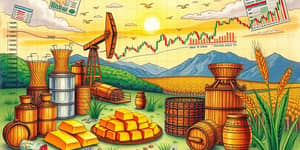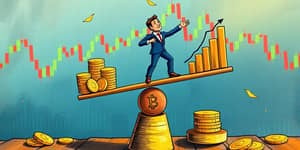
In an era where capital flows cross borders in milliseconds, the foreign exchange market has become the beating heart of global finance. This article delves into how FX products work, who participates, and how you can harness these opportunities with confidence.
The foreign exchange market, often called forex or FX, is the world’s largest financial marketplace. It is an over-the-counter, decentralized global market operating 24 hours a day, five days a week. Key trading hubs like London, New York, Singapore, Hong Kong, and Tokyo ensure liquidity around the clock.
Daily turnovers can reach mind-boggling figures. In April 2022, daily trading volume hit an astonishing $7.5 trillion. As globalization and technology advance, this figure continues to climb, reflecting the relentless pace of international commerce.
Understanding who moves the market can guide your own trading approach. Participants range from central banks and governments to hedge funds and individual retail traders. Each brings unique motivations and strategies.
London leads with roughly 38% of global FX volume, followed by New York at 19%. Asian centers like Singapore and Hong Kong account for 9% and 7%, respectively.
FX products cater to diverse needs: immediate settlements, future hedges, or optional flexibility. Currencies are always traded in pairs (e.g., EUR/USD), and transactions occur in standardized lot sizes: micro, mini, and standard.
Each instrument balances risk, cost, and flexibility. Spot trades suit immediate needs, while forwards and options protect against adverse currency swings.
FX markets power global commerce in several ways. Understanding core functions helps traders and businesses decide which tools to use.
Growing digital platforms have democratized access, allowing smaller traders to participate alongside large institutions. Education and disciplined risk controls are essential for success.
Multiple forces drive currency values, creating opportunities and volatility. Central bank decisions on interest rates often trigger sharp moves. In early 2025, the U.S. dollar saw a 2% depreciation, reflecting shifting monetary policies.
Geopolitical events—trade disputes, regulatory shifts, and global conflicts—add unpredictability. Meanwhile, economic indicators such as inflation and GDP data influence trader expectations. Rapid adoption of algorithmic trading and AI-driven platforms further accelerates market reactions.
For retail participants aiming to navigate this dynamic landscape, here are actionable steps:
Combining technical analysis with fundamental insights offers a balanced approach. Always avoid over-leveraging, which can amplify both gains and losses.
The FX market’s growth trajectory remains steep. By 2025, its annual size is projected to exceed $838 billion, and by 2029 it could surpass $1.1 trillion. Emerging markets will play an outsized role as connectivity improves.
Environmental, Social, and Governance (ESG) considerations are beginning to shape FX strategies, while digital currencies and blockchain promise new trading paradigms. The increase in retail participation and investments in advanced trading infrastructure underscore a market that is both accessible and competitive.
Trading currencies on the global market requires knowledge, preparation, and adaptability. By understanding product types, market drivers, and key players, you can craft strategies that fit your objectives.
Whether you are a corporate treasurer seeking to hedge exposure or an individual trader aiming for profit, disciplined risk management and continuous learning are your best allies. Embrace technological tools, stay attuned to economic signals, and remember that patience and consistency often yield long-term success in the ever-evolving world of forex.
References













